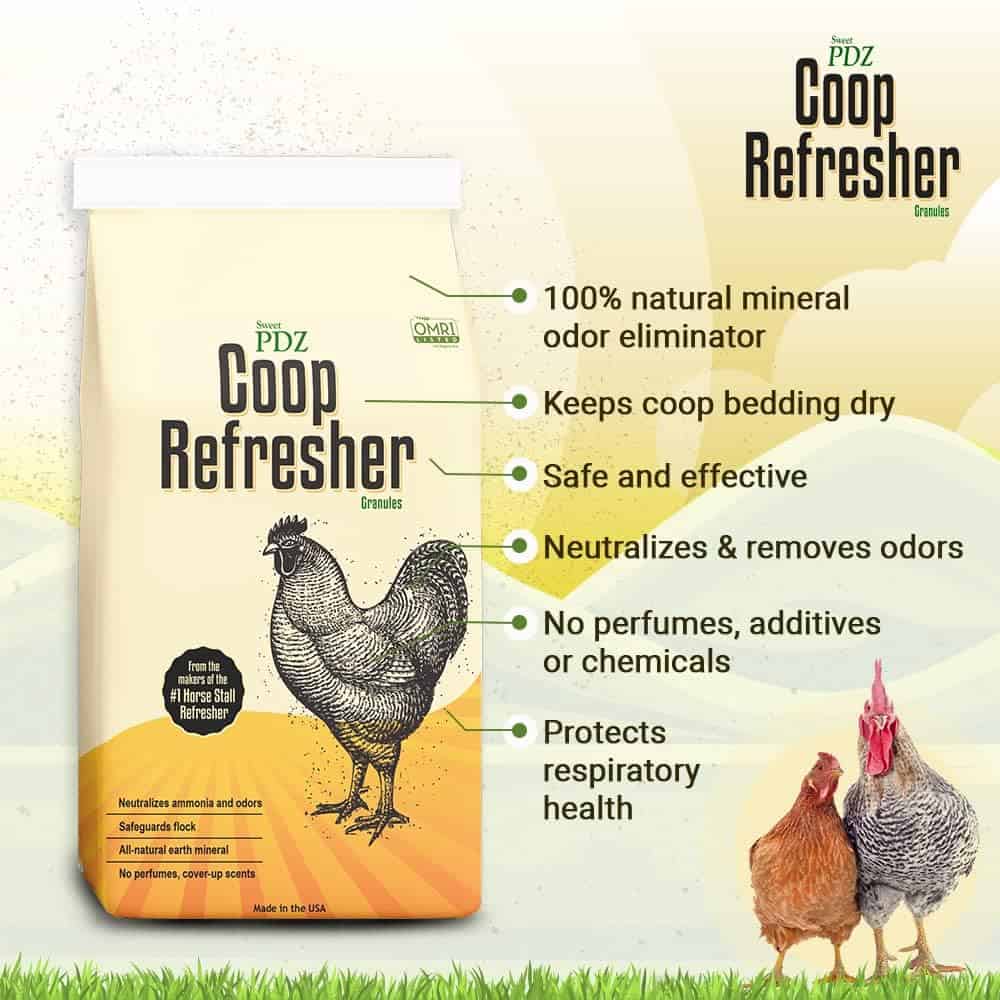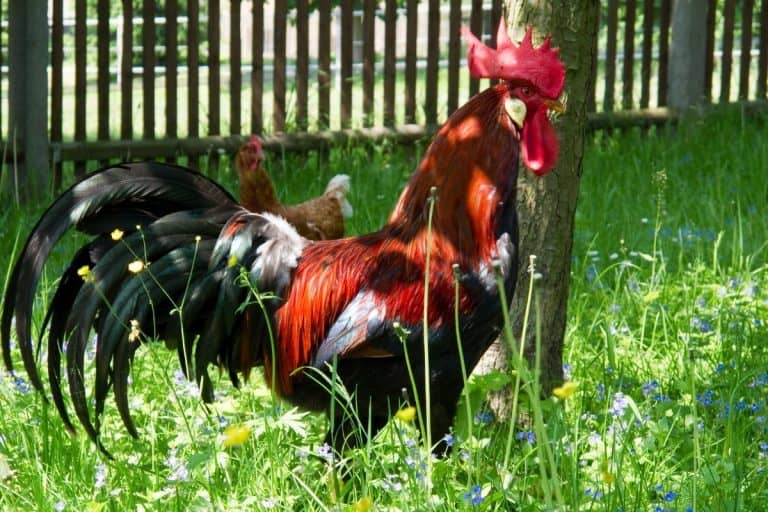Why Do Roosters Flap Their Wings: 12 reasons you need to know
Roosters can be a lot of fun to raise and each individual has a unique personality, but they also exhibit some behaviors that can be challenging for their owners to understand, one of which is wing flapping.
Generally, wing flapping in roosters is regarded as normal behavior, but it all depends on the cause because some can be serious like parasites. However, typical causes of wing flapping in roosters include an attempt to fly, taking a dust bath, crowing, and so forth.
If you want to keep your roosters healthy, you must have a basic understanding of their peculiar behaviors because they can signify important things. In this article, I’ll explain why roosters flap their wings and whether you should be concerned about it or not, so read on.
In the bird kingdom, wing flapping has a variety of purposes in addition to flight. The following is a list of reasons why roosters flap their wings, which you should be aware of as a chicken owner.
But before you dive into this topic, did you know I've got a page packed with my go-to chicken stuff? From the best feed to handy tools, it's all there. Don't you want the best for your flock? Check it out right here.
1. To produce a crowing sound
The sound of a rooster crowing is the sound that is most associated with farms and people who keep chickens. A rooster will typically climb to a high point and flap its wings before crowing.
Many veterinarians and ornithologists (people who study birds) have this theory that roosters flap their wings before crowing so they can fill their respiratory system with enough air to produce this loud sound, though specific evidence is not documented.

A chicken’s respiratory system is made up of several air sacs that help chickens breathe and produce sounds. Unlike mammals, a chicken’s lungs are fixed in the rib cage and cannot inflate or deflate.
Since chickens’ respiratory systems differ significantly from those of mammals, experts think that this theory may be correct. Roosters will flap their wings, to achieve the necessary force to push air into their respiratory tracts and produce a loud crowing sound.
Wait, I have some recommendations for you!
Before you go any further, I want you to take a look at some of the recommendations I've handpicked for you. I think these are essential items you should have for your chickens flock. You can check them out and buy them directly from Amazon.
 |  |  |  |
| Essential accessory for your coop | No more tripping over hoses! | Predator protection made easy | Comfort + style is possible |
2. For flight and clearing obstacles
The other obvious reason why roosters will flap their wings is to fly or climb on high places like rooftops, fences, trees, etc. Chickens are considered to be flightless birds but that is not entirely true, in fact, they are good at flying for short distances and short heights.
Roosters prefer high spots so that they keep an eye on predators, their hens, and their territory. They will also flap their wings to reach high ground and out of the reach of predators while under attack.
By repeatedly flapping their wings they are able to lift their bodies off the ground and climb elevated objects. When roosters are between 4 and 6 months old, you can regularly see them flapping their wings as they attempt to climb up various structures in and around their coops.
3. To lower their body temperature
When it’s hot outside, it’s very common for roosters to flap their wings frequently. Roosters have no sweat glands and their entire body is covered in thick plumage that traps heat.
The two well-known methods they utilize to lower their body temperature are panting and heat dissipation through their comb and wattles, but there is an additional feature as well.
On hot days, they will regularly flap their wings to increase airflow around the blood vessels on the ventral side (underside) of their wings. The air will circulate around these blood vessels and will cool the blood hence dissipating their body heat.
4. If they have parasites
This occurs usually when roosters are kept in unhygienic conditions and the coops are not regularly cleaned, which encourages parasite infestation. Ticks, lice, and mites are common parasites that infest chickens.
These parasites prefer to attach themselves to the underside of the wings and the area near the joint where the wing is attached to the body. In addition to sucking blood, some of these parasites frequently bite, which makes roosters very uncomfortable and causes them to constantly flap their wings in distress.
The frequency and intensity of wing flapping caused by parasites in your rooster will typically be higher than those caused by any other factor.
5. To spread dust evenly
Dust bathing is one of the favorite activities of roosters and it is an essential part of their daily hygiene routine because it keeps their bodies parasite free. In addition to rolling in the dirt, roosters will flap their wings to spread the dirt evenly across their bodies.
Furthermore, they will carry the dirt on their wings, which they then flap to allow it to reach their backs and tail feathers, which would otherwise be challenging.
6. For stretching their body
Roosters can flap their wings as a simple form of warm-up or exercise to stretch out their muscles similar to how humans stretch their arms when they wake up. Roosters typically do it after eating or in the early morning hours.
Because roosters don’t move much while they are roosting at night, they need to exercise their muscles in the morning by flapping their wings.
7. To attract hens
One of the main objectives of male roosters is to attract hens, and what better way to do it than by flapping their wings and flashing eye-catching colors?
Since there is no mating season for chickens and they continuously reproduce, roosters exhibit this wing-flapping behavior all year long. Roosters will begin to exhibit this behavior as soon as they reach sexual maturity, which typically occurs between the ages of 6 and 8 months.
8. To ward off predators
Roosters are fiercely protective of their hens, and they are also well-armed with a sharp beak, claws, and of course wings as defense mechanisms.
They vigorously flap their wings when fighting a predator like a fox or a cat and strike it with the strong bones found at the tip of their wings, which not only make them appear larger.
When fighting a predator, wing flapping helps roosters distract it and make it lose focus.
9. To assert dominance
Roosters have a very strict hierarchy or pecking order. A dominant rooster will never allow another rooster to take its place. One way a dominant rooster will display aggression and assert its presence is by flapping its wings at rival roosters.

This not only makes him appear larger than the others, but it also conveys a strong message that I am in charge here. Roosters will also flap their wings to attack other roosters and defend themselves from the claws and beaks of the rival.
10. While foraging
Roosters will spend most of their time foraging for food especially if they are free range.
Foraging is their instinctive behavior and oftentimes while doing it they may start to flap their wings to get rid of leaves, little sticks, or dirt out of their way. However, this is just a theory and has not been scientifically proven yet.
11. After vaccination
All roosters may not flap their wings after receiving a vaccine but some might do it. Many vaccines are administered to roosters through the wing web, which is a flap of skin near the elbow joint in their wings. One of the vaccines given at this location is the fowlpox vaccine.
To administer the vaccine, needles are used to puncture the wing web, which could occasionally feel a little uncomfortable and painful to the rooster and is similar to receiving an injection.
Some roosters will start flapping their wings shortly after receiving a vaccination as a result of this pain and discomfort, but this only happens briefly; they will stop doing it in a few hours.
Some roosters may also flap their wings to ease any discomfort following an intramuscular injection or vaccination.
12. Normal behavior
Roosters sometimes flap their wings without any significant reason. They will just do it as a time pass or to relieve their boredom and it is completely normal for them.
So you don’t have to be concerned whenever you see your rooster flapping its wings. But if the frequency and intensity of wing flapping are higher than usual you might want to take a closer look.
Related questions
Why Do Roosters Flap Their Wings On The Ground?
The purpose of roosters flapping their wings on the ground is to get a good dust bath. Flapping their wings on the ground helps them to lift up the dust and dirt so that their whole plumage can get covered from it and they can live a parasite-free life.
Why Do Roosters Flap Their Wings When They See You?
When roosters see their owners, they flap their wings for one of two reasons: either they are delighted and overjoyed to see them, or they are frightened and want them to stay away. Your rooster will be extremely calm and may even crow as you approach it if the wing flapping is caused due to happiness.
However, if your rooster has adopted an attacking posture, the feathers around its neck are raised up, and it is flapping its wings it is clearly not happy to see you. If a rooster is hungry and sees you, it may also flap its wings in an attempt to get food.






